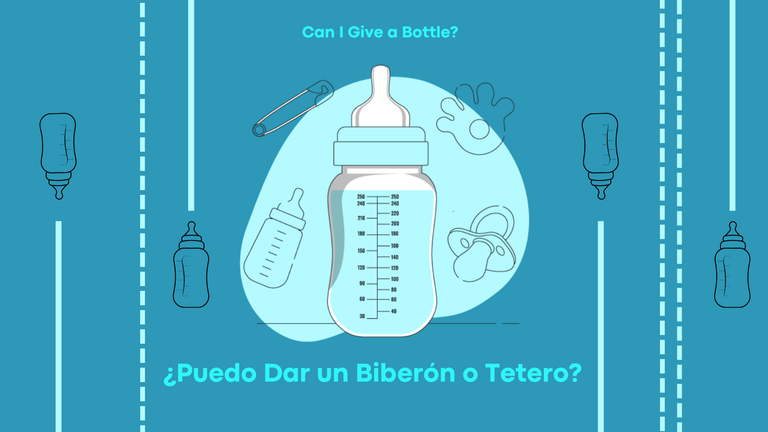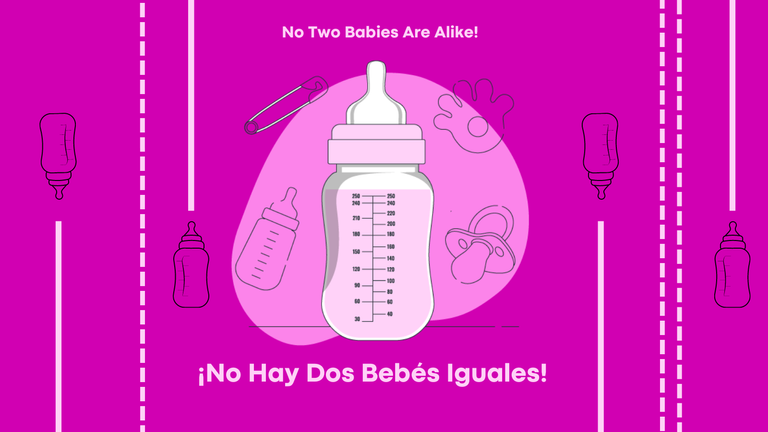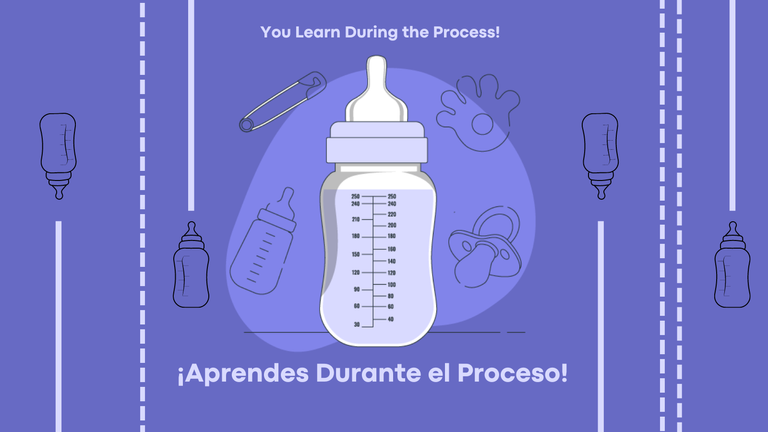


Hay cosas que no se aprenden de la noche a la mañana, tampoco recibirás formación en una universidad o escuela. Son cosas que la experiencia te enseña… Lo digo de una manera muy reflexiva y por lo que he vivido. Hacer un biberón para un bebé no es nada fácil. Todo tiene su complejidad por primera vez.
¿Por qué no es fácil? Hay varios aspectos que uno debe considerar, aún más, si eres un inexperto en la materia (tema). No todos los niños asimilan tomar un tetero (biberón) a temprana edad, los pediatras recomiendan que el niño sea amamantado más de un año, pero la regularidad disminuye con el tiempo.
La primera vez que di un biberón lo hice bajo supervisión, pero no lo preparé y menos sabía que formula de leche pediátrica le estaban dando a uno de mis primos. Cuando Isabella nació todo cambio. En Venezuela en ese momento era una odisea conseguir un pote de leche para niños recién nacidos, aun teniendo el dinero para adquirirla pocos locales la vendían o exhibían en anaqueles.
En nuestro país existe la tradición médica de consultar desde que momento se puede comenzar a dar fórmula de leche pediátrica. Esto es lo correcto, hay niños que son intolerantes a la lactosa y no pueden consumirla. Ejemplo, mi prima (hija de mi tío: hermano de mi mamá) le daban leche de nueces. En ése tiempo no escaseaban las cosas.
Is giving a bottle to a baby for the first time really difficult?
There are things you don't learn overnight, nor will you be trained at a university or school. They are things that experience teaches you... I say this in a very reflective way and because of what I have experienced. Making a bottle for a baby is not easy. Everything has its complexity for the first time.
Why is it not easy? There are several aspects to consider, even more so if you are inexperienced in the matter. Not all children assimilate taking a bottle at an early age; pediatricians recommend that the child be breastfed for more than a year, but the regularity decreases with time.
The first time I gave a bottle, I did it under supervision, but I didn't prepare it, and I didn't even know what formula they were giving to one of my cousins. When Isabella was born, everything changed. In Venezuela at that time, it was an odyssey to get a bottle of milk for newborns; even if you had the money to buy it, few stores sold it or displayed it on the shelves.
In our country, there is a medical tradition of consulting from the moment you can start giving infant formula milk. This is the right thing to do; there are children who are lactose intolerant and cannot consume it. For example, my cousin (my uncle's daughter, my mother's brother) was given nut milk. At that time, there was no shortage of things.



Cuando mi sobrina Isabella nació, todo era distinto. Entonces debo sumar tres consideraciones que enfrenté para poder hacer un biberón para alimentar a Isabella: 1) las consideraciones médicas; 2) las complejidades del proceso de realización 3) la adquisición de la leche pediátrica.
Cada uno de estos criterios era difícil de realizar, pero más por el tema país que personal. Al principio lo veía complejo, pero al tiempo me acostumbré y entendí como hacer las cosas de una manera favorable y no desgastante.
En este punto solamente he explicado cosas que en cierto punto son técnicas o circunstanciales. ¿A qué me refiero? Todos los niños son diferentes, es propio del comportamiento humano. Los bebes tienen horas de alimentación y a medida que van creciendo estas van cambiando. Con mi sobrina fue el mismo caso.
No me acostumbraba al inicio, pero sin lugar a dudas lo más complejo es atender a un niño de noche. Los bebes no sólo lloran; sino que les da hambre en la madrugada y entender que debes alimentarlo en ése instante es prioritario. He llegado a un punto muy reflexivo y es que generalmente el error que todo el mundo comete al alimentar a un bebé en la madrugada es no sacarle los gases.
Los niños suelen llenarse mucho de gases, por eso hay que sacarlo con palmadas suaves, con un movimiento ascendente en su pequeña espalda. Se siente muy bien, pero también hay que prevenir con alguna manta para que no te regurgite (en Venezuela le decimos a esto buchar). Es algo qué créeme, debes evitar. ¡No huele muy bien! Aparte de que puede ser un gran regurgite que ensucie toda la ropa que llevas puesta… Si lo habéis vivido, cuéntame cómo fue tu expresión facial.
When my niece Isabella was born, everything was different. So I have to add three considerations I faced in order to make a bottle to feed Isabella: 1) the medical considerations; 2) the complexities of the making process; and 3) the procurement of the pediatric milk.
Each of these criteria was difficult to realize, but more because of the country than the personal issue. At the beginning, I found it complex, but with time, I got used to it and understood how to do things in a favorable and non-distracting way.
At this point, I have only explained things that are technical or circumstantial to a certain extent. What do I mean? All children are different; it is part of human behavior. Babies have feeding times, and as they get older, this changes. It was the same with my niece.
I wasn't used to it at the beginning, but without a doubt, the most complex thing is taking care of a child at night. Babies don't just cry; they get hungry in the early hours of the morning, and understanding that you have to feed them at that time is a priority. I have come to a very thoughtful point, and that is that generally, the mistake everyone makes when feeding a baby in the early hours of the morning is not getting the gas out.
Children tend to get very gassy, so you have to gently pat it out, with an upward movement on their little back. It feels great, but you also have to prevent it with a blanket so that it doesn't spit up (in Venezuela, we call this buchar). It's something that, believe me, you should avoid. Furthermore, it doesn't smell very good! Apart from the fact that it can be a great regurgitation that can dirty all the clothes you are wearing... If you have experienced it, tell me how your facial expression was.



Acostar a un bebé sin sacarle los gases luego de que se tome el biberón no es para nada recomendable si uno desea seguir durmiendo. La situación sin lugar a dudas empeora si se omite esa parte.
Los procesos cambian, la frecuencia de alimentación del niño no es la misma. Lo digo por qué poco a poco comprendes lo importante y cálido que se siente ver como una vida va creciendo y contribuyes en ese proceso.
La época donde los biberones son menos recurrentes comienza a partir de los seis meses. Ése fue el caso para mi sobrina Isabella, teníamos autorización médica para darle sopas, alimentos sólidos y, además, jugos de algunas frutas.
En este instante ya no es necesario sacar gases, pero sigues en proceso de aprendizaje. El bebé en ocasiones no quiere comer o simplemente juega con lo que le das. Son procesos, y también depende de cada niño.
De hacer 4 o 5 biberones pasas a tres o dos diarios hasta que miras y han pasado nueve meses. En este momento comprendes que dos teteros (biberón) serán tu aliado, uno en la mañana y otro en la noche. El bebé ya ha crecido y tú también aprendes a mantener la calma.
¿Es difícil preparar un biberón para un bebé? Sí, debe hacerse con agua potabilizada y hervida. Esto depende de las normas que tengas que cumplir. Todo es una experiencia y un esfuerzo real.
Putting a baby to bed without taking the gas out after the bottle is taken is not at all advisable if you want to continue sleeping. The situation is undoubtedly made worse if that part is omitted.
The processes change, and the frequency of feeding the child is not the same. I say this because, little by little, you understand how important and warm it feels to see how life is growing, and you contribute to that process.
The time when bottles are less recurrent starts from six months onwards. That was the case for my niece Isabella; we had medical authorization to give her soups, solid foods and also some fruit juices.
At this point, it is no longer necessary to pass gas, but you are still in the learning process. The baby sometimes doesn't want to eat or just plays with what you give him. These are processes, and they also depend on each child.
From doing 4 or 5 bottles, you go to three or two a day until you look, and nine months have passed. At this point, you understand that two bottles will be your allies, one in the morning and one at night. The baby has grown up, and you have also learned to keep calm.
Is it difficult to prepare a bottle for a baby? Yes, it has to be made with drinking water that has been purified and boiled. This depends on the standards you have to meet. Everything is an experience and a real effort.
Diseño de Imgagenes | Image Design: Adobe Illustrator 2021 - Canva / Recurso o Vector | Resource or Vector: storyset | freepik / Traducción | Translation: DeepL.

